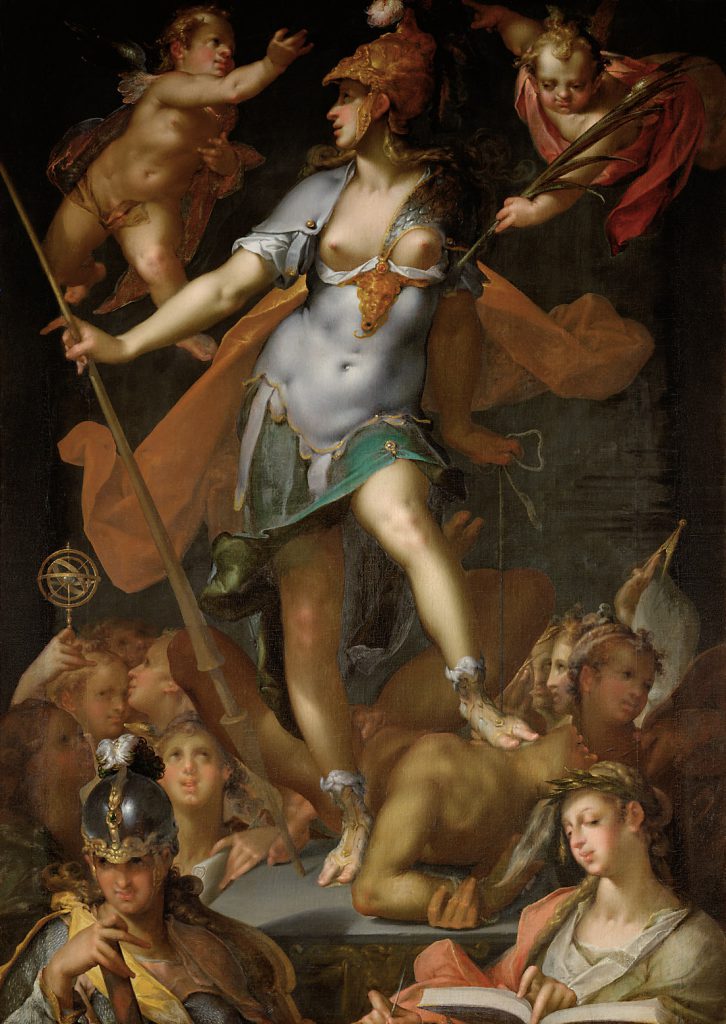
Reading through Andrew Wheatcroft’s history The Habsburgs recently (one of my souvenirs from Vienna), I came across mention of Bartholomeus Spranger (1546–1611), a court artist for Rudolf II in Prague; before that he had been a court painter for Pope Pius V and Rudolf’s predecessor as Holy Roman Emperor, Maximilian II. Although there was a major American exhibition of this work at the Metropolitan Museum of Art ten years ago, by far the largest collection of his work now resides at Vienna’s Kunsthistorischesmuseum.
That’s where you can find Spranger’s The Triumph of Wisdom, above. To quote from the KHM’s description of the work (lightly edited from Google Translate):
Minerva, the goddess of the arts and science, is at the center of the presentation. The uncovered breasts can be characterized as “Sapientia lactans,” as the nutrient of wisdom. She has conquered the foolish “ignorance.” But their keeping of suffering also reminds us of the risen Christ. It triumphs over dark forces and becomes the embodiment of the highest human ideals. The refined colour and elegant pose are hallmarks of Rudolfinian court art.
Spranger, an examplar of the Northern Mannerist school, was renowned for his remarkable ability to marry an erotic sensuousness to both pagan and Christian themes. “This style stressed sensuality, which was expressed in smoothly modeled, elongated figures arranged in elegant poses, often including a nude woman seen from behind,” says the ol’ Wikipedia. It’s terrific — I never knew wisdom could look so great. And I wonder if Facebook will permit it. (UPDATE: It won’t.)
